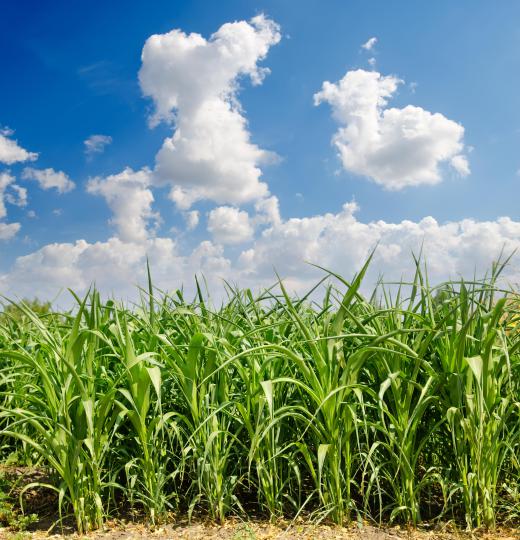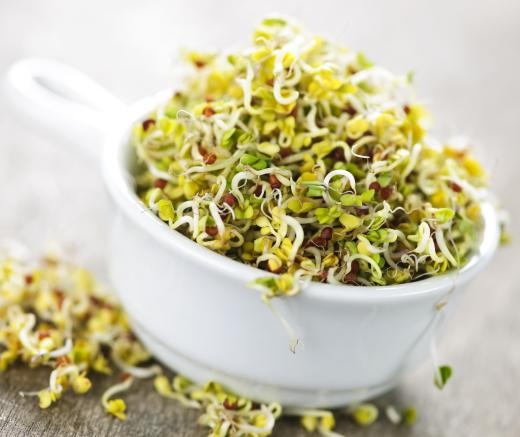The production of maize, also known as corn, requires a series of steps to plant, cultivate, and harvest the crop successfully. A number of different varieties of maize are grown worldwide in very large concentrations, and each requires a slightly different approach to management. Farmers also have to consider how they plan to use their maize, as this can affect their cultivation activities as well. Numerous nations have government agencies that provide advice and assistance with crop cultivation, including the production of maize.
Preparing the fields is the first step. This crop is often grown in rotation with other crops like alfalfa, and the farmer must decide on the most appropriate schedule for crop rotation and prepare his fields accordingly. Before planting, the field may be worked with soil amendments, and the farmer selects the planting time on the basis of the specific varietal and the climate. Maize is often planted in spring, and farmers may opt to seed directly in the fields or to establish starts and transplant later.

Once a maize crop is established, it needs to be maintained with appropriate watering and fertilizer. This crop has shallow roots, making soil moisture critical to the production of maize. If the soil is too dry, the stalks will start to wither and die. Wet soil can encourage the development of fungus that may blight the crop. Farmers also need to watch out for infections and pests that could damage or destroy their maize crop.

As the production of maize progresses, the farmer can make decisions about when to harvest. Silage is taken while the plants are still green and the ears are not fully developed. For sweet corn like that eaten at the table, the farmer wants to harvest before substantial starch development occurs. Field corn is harvested much later, as the ears fully mature and start to harden up with starch. The type of corn varietal can have an influence on harvest time, as some cultivars mature more quickly than others.
Throughout the production of maize, a number of things can go wrong. Crops can be blighted by infection, pests, or poor watering practices. Exhausted soil may not support the crop, or soil could carry infections that kill the plants. The farmer may also have to deal with a slump in prices that makes the crop less profitable to harvest. Some farmers carry crop insurance to protect them from unpredictable events that might interfere with a harvest.
Ever since she began contributing to the site several years ago, Mary has embraced the exciting challenge of being a About Mechanics researcher and writer. Mary has a liberal arts degree from Goddard College and spends her free time reading, cooking, and exploring the great outdoors.

